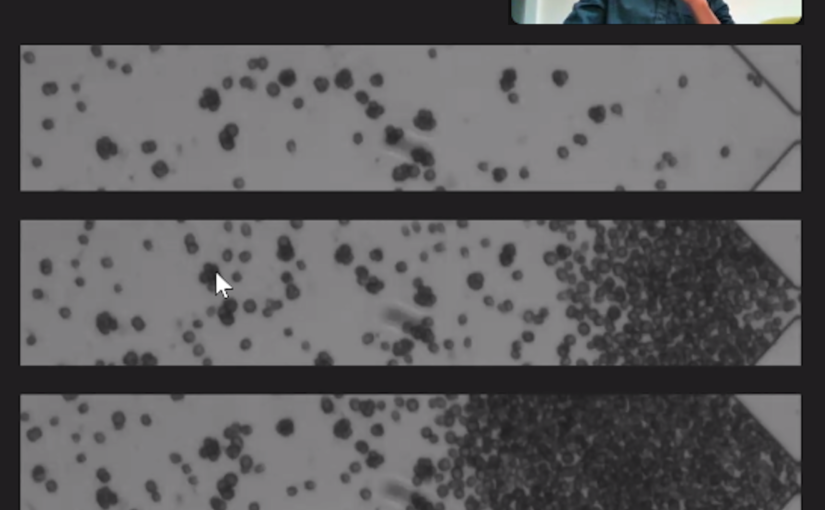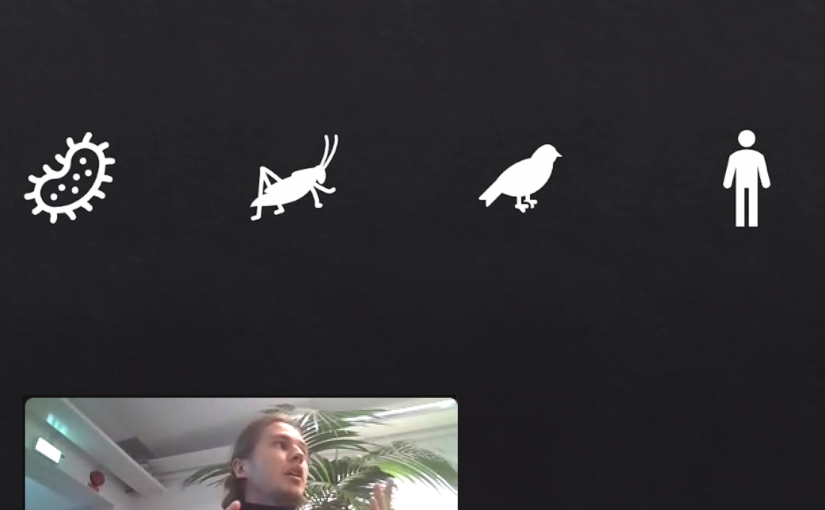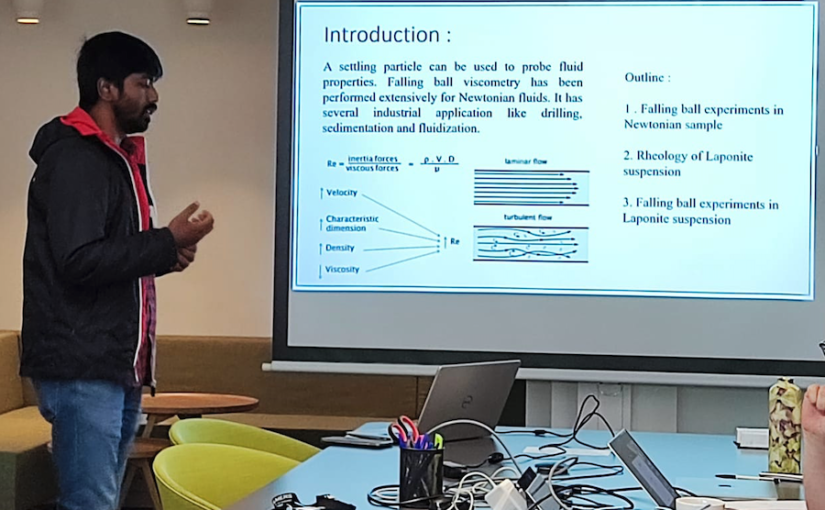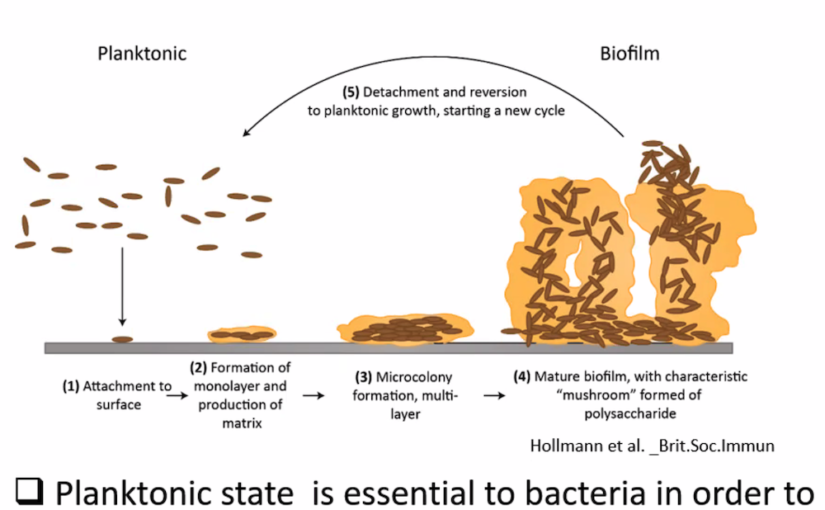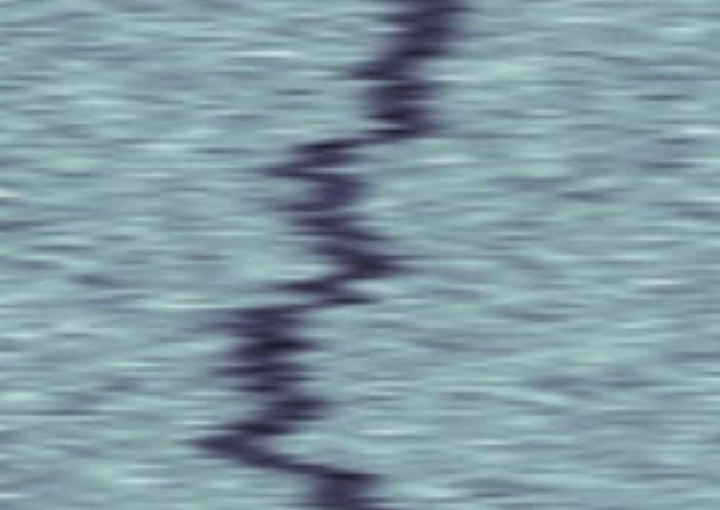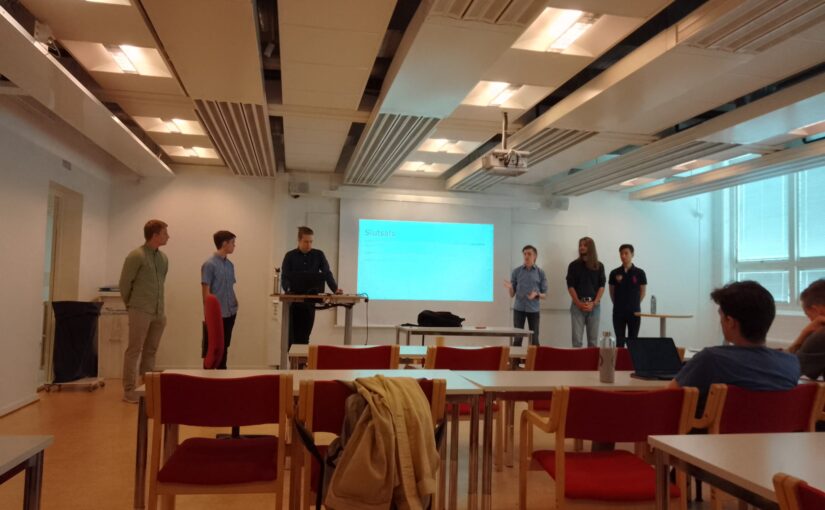Emergent Complex Behaviors in Active Matter
Giovanni Volpe
9 June 2022, 14:30 (IST)
Online for MNBF Workshop: International Workshop On Active Systems
IIT Madras, India, 8-9 June 2022
Author: Agnese Callegari
Presentation by Lun Li, 7 June 2022
Robots in real-world scenarios
Lun Li
7 June 2022, 15:00 CET
Abstract
In this presentation, I will demonstrate how robots can work in the real-world and dynamic environments assisting or replacing humans and present examples from my previous work experiences. I will also explain the basic knowledge about robots, the challenges to design a robust robot system for business, and the current state of the robotics industry.
Short Bio
Lun Li is a robotics engineer. His work focuses on artificial intelligence and robot designing in the areas of robot navigation, manipulation, and cooperation. In the past three years, he has served as the CTO of robot startups in China. He has led two robot projects, one is an agricultural robotic jasmine tea harvester, and the other is an industrial unmanned forklift. The latter has been successfully launched in the market. Before entering the workplace, he got his two bachelor’s degrees from Beihang University in China and a master’s degree from Texas A&M University in United States.
Date: 7 June 2022
Time: 15:00
Place: Faraday
Santhosh Shivan Gurumurthy defendeded his Master thesis on 2 June 2022. Congrats!
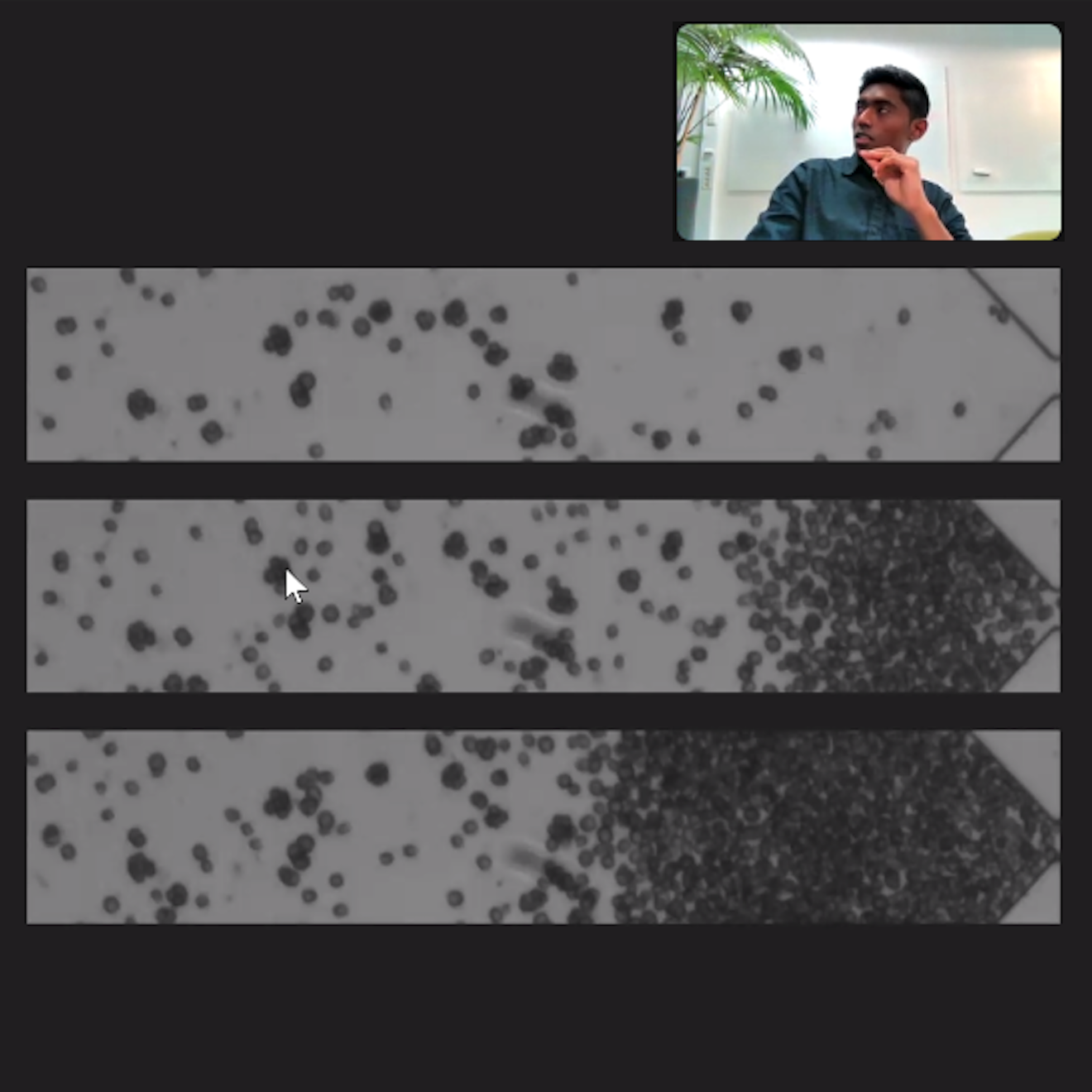
Title: Digital video microscopy using deep learning
Abstract:
Particle tracking is essential in various fields of science, from study of cells in biology to studying particle dynamics in physics. The standard classical methods are algorithmic in nature, requiring heavy manual work to tweak the parameter to various conditions and tasks. In this project, we try to apply four such methods to different particle tracking tasks and show that these are better alternatives to standard methods. We use Deeptrack as the base framework for all our tasks. We show that CNN can track a single Janus particle suspended in a liquid and outperforms a standard method called radial center method especially under noisy and unsymmetrical particle conditions. We then demonstrate how the LodeSTAR algorithm outperforms the YOLO algorithm in tracking the centers of multiple particles in an image. Subsequently, we apply a method called MAGIK (Motion Analysis through GNN Inductive Knowledge) to predict the trajectories of the particles in a video.
Name of the master programme: MPCAS – Complex Adaptive Systems
Examiner: Giovanni Volpe
Supervisor: Jesús Pineda
Opponent: Emil Jansson
Place: Nexus
Time: 2 June, 2022, 19:00
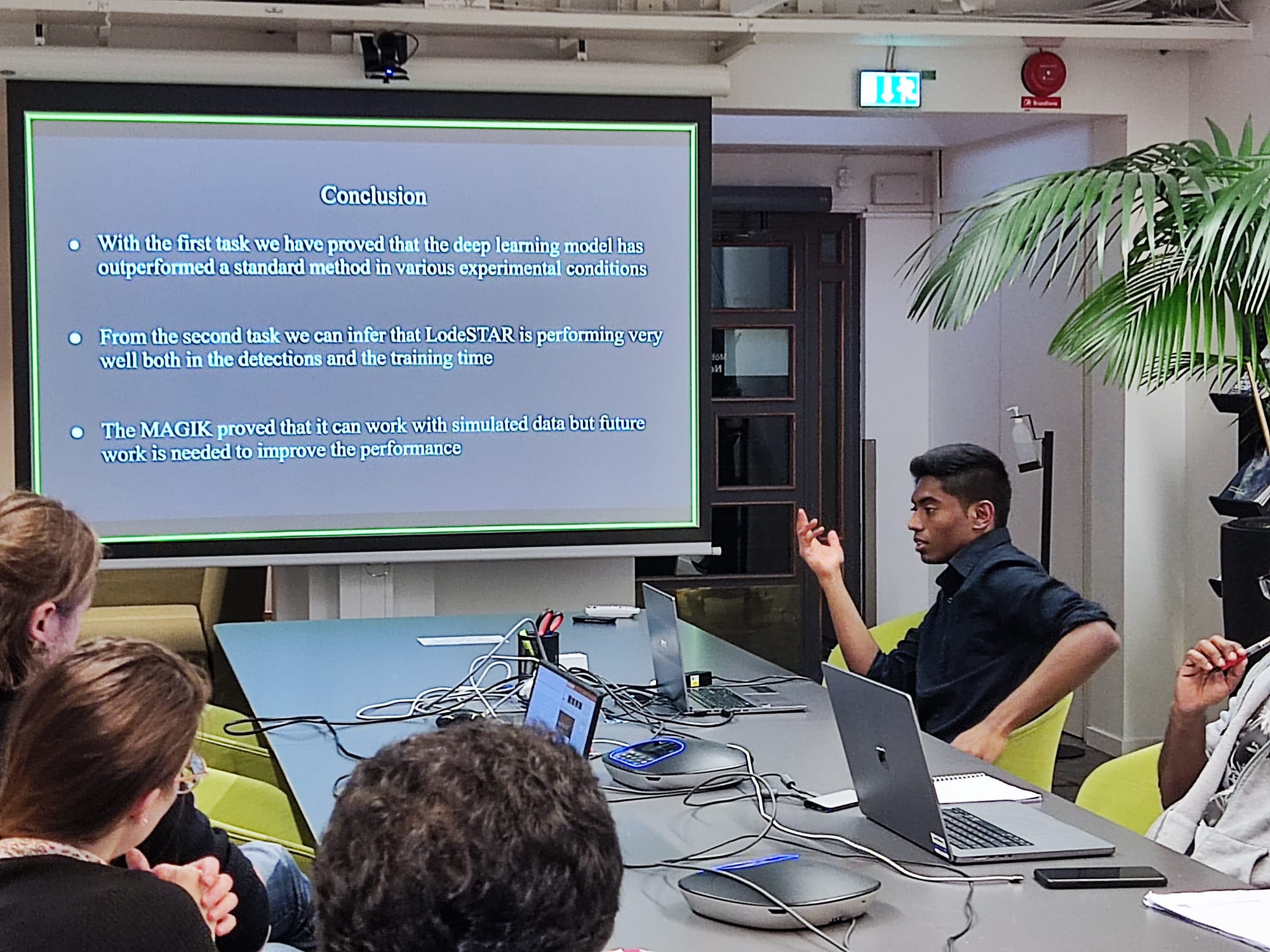
Emil Jansson defended his Master Thesis on 2 June 2022. Congrats!
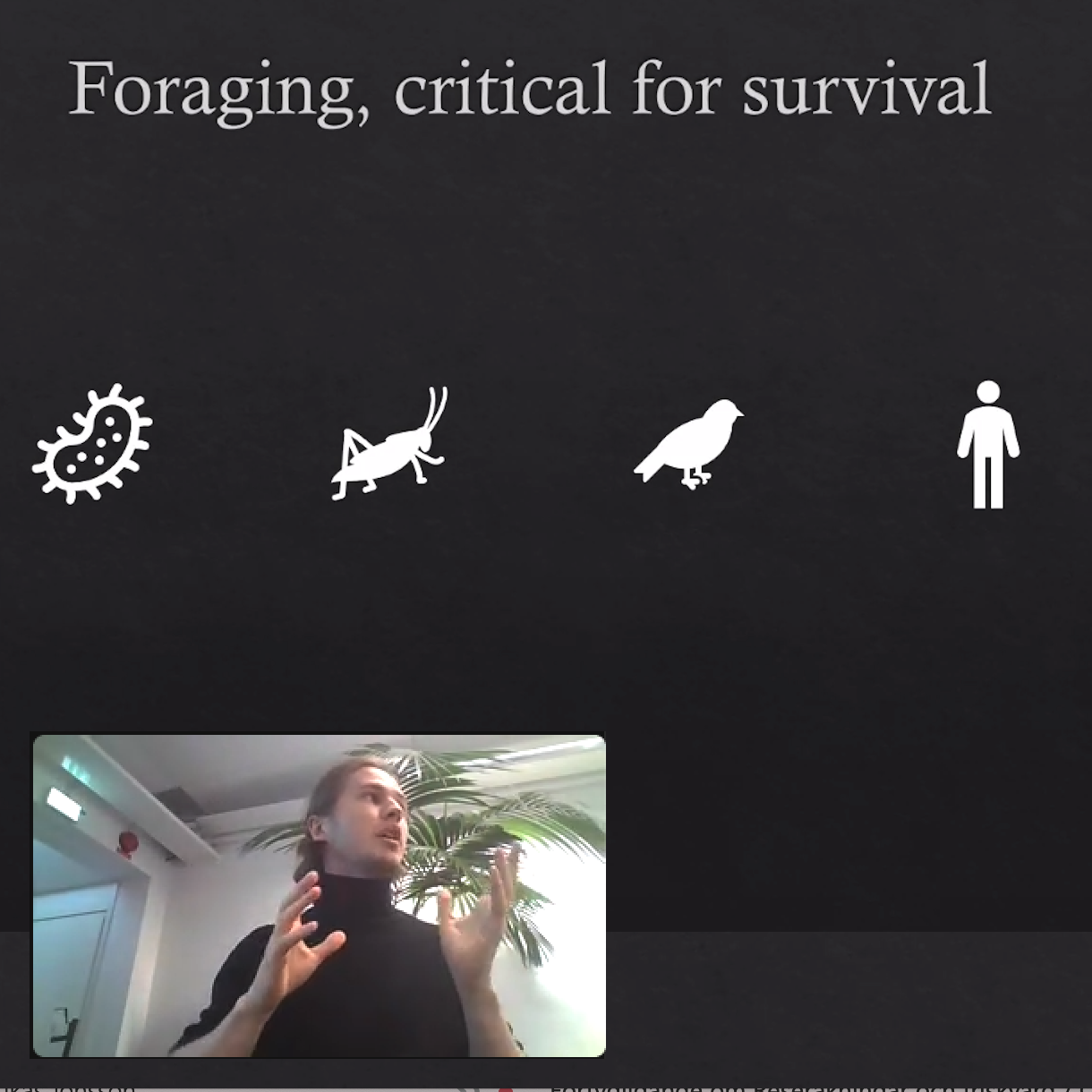
Title: Evolutionarily Emergent Foraging Strategies for Active Agents
Abstract:
Microbes, insects, birds, and mammals. Many forms of life depend on the search for food to survive. One search strategy that has been observed in nature is a levy flight, where an animal moves from area to area in long stretches to then explore the local environment. Levy flights can be described as statistical mathematical phenomena where the steps lengths of the agent’s movement follow a heavy tailed distribution. Earlier studies have shown that in certain environments, a middle ground between ballistic Levy flights and Brownian motion is more efficient than the outlier strategies. This thesis expands on those results by investigating which strategies perform best in an environment where local conditions change as one moves through space. We find that using a strategy that adapts to local conditions does not necessarily perform well if it does not consider the changing nature of the environment. We also let a neural network evolve using a genetic algorithm and let it optimize the movement of an agent which leads to efficient searches.
Name of the master programme: MPCAS – Complex Adaptive Systems
Examiner: Giovanni Volpe
Supervisor: Giovanni Volpe
Opponent: Santhosh Shivan Gurumurthy
Place: Nexus
Time: 2 June, 2022, 18:00
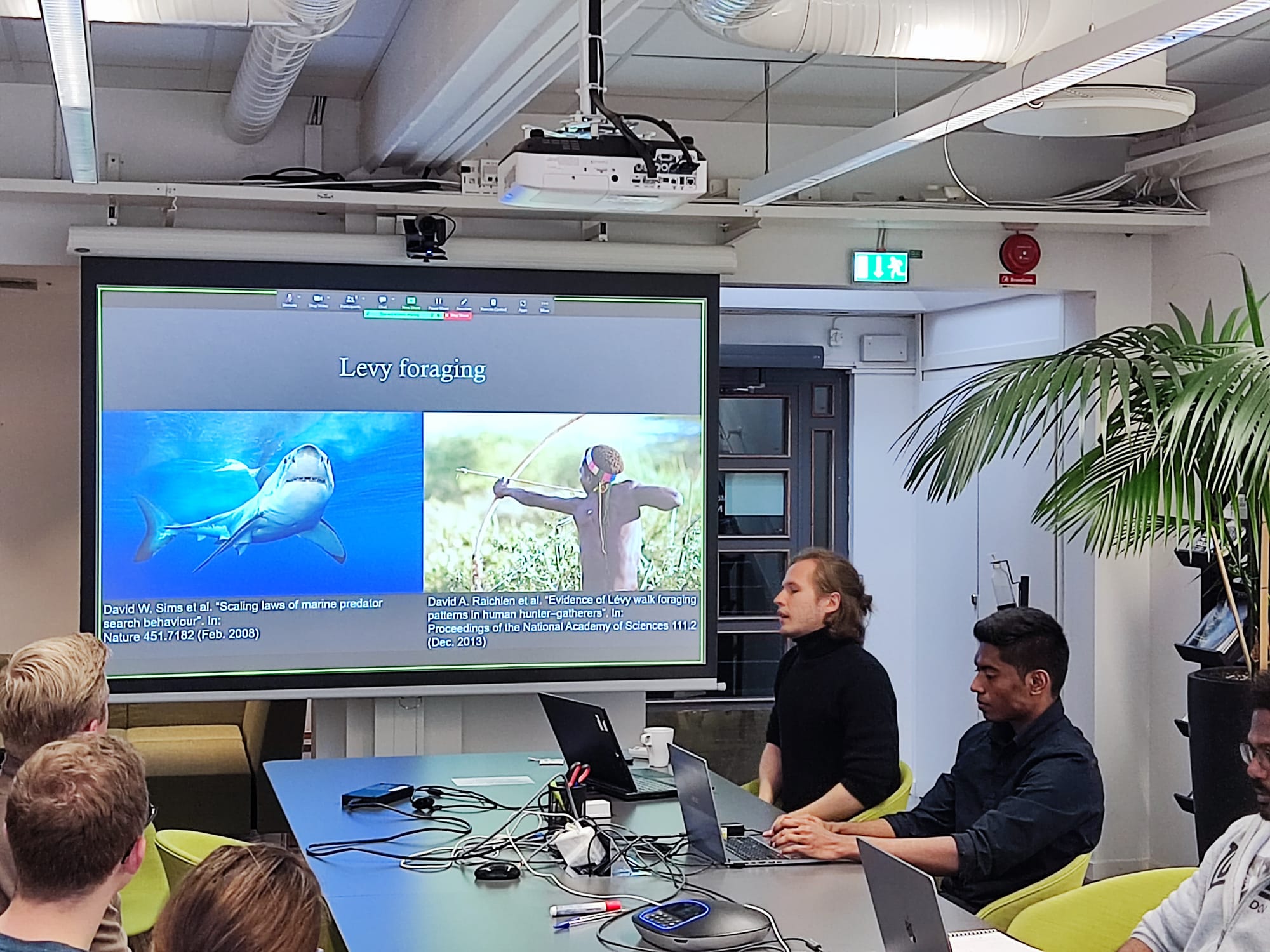
Isak Schwartz and William Åkvist defended their Master thesis on 1 June 2022. Congrats!
Isak Schwartz and William Åkvist defended their Master thesis in MPALG and MPCAS at the Chalmers University of Technology on 1 June 2022 at 16:00. Congrats!
Title: Active learning in deep convolutional neural networks for image segmentation
Subtitle:
Evaluating data-centric approaches to improving performance in seat belt localization from images
Abstract:
The sitting position and seat belt orientation of passengers in automobiles can be crucial in the event of a collision. In order to warn passengers of unsafe positions, deep learning models in the form of neural networks can be used to identify the seat belt from image data. Performance of neural networks can be increased by improving the model (model-centric approaches) or by improving the data used to train the model (data-centric approaches).
In this thesis we compare the segmentation performance gains from model-centric approaches to data-centric approaches including stratified sampling, balancing, label error reduction and active learning. Active learning is the process of iteratively choosing data points for labeling according to the expected improvement in model performance. No new model architecture was found that improved performance, but the model training time was sped up by four times without performance loss. Stratified sampling, balancing and error reduction did not improve performance.
In active learning, images to be labeled were selected according to the model’s uncertainty. Several uncertainty metrics were used, all leading to an improvement when using active learning. The best result showed that we achieved 95% and 99% of the best baseline performance using 19% and 23% less data respectively.
Name of the master programme: MPALG – Computer Science: Algorithms, Languages, and Logic, MPCAS – Complex Adaptive Systems
Examiner: Giovanni Volpe
Supervisor: Tomas Björklund, Sheng Huang (Volvo Cars Corporation)
Opponent: Rohini Bisht, Selomie Kindu
Place: Nexus
Time: 1 June, 2022, 16:00
Presentation by R. Biswas, 1 June 2022
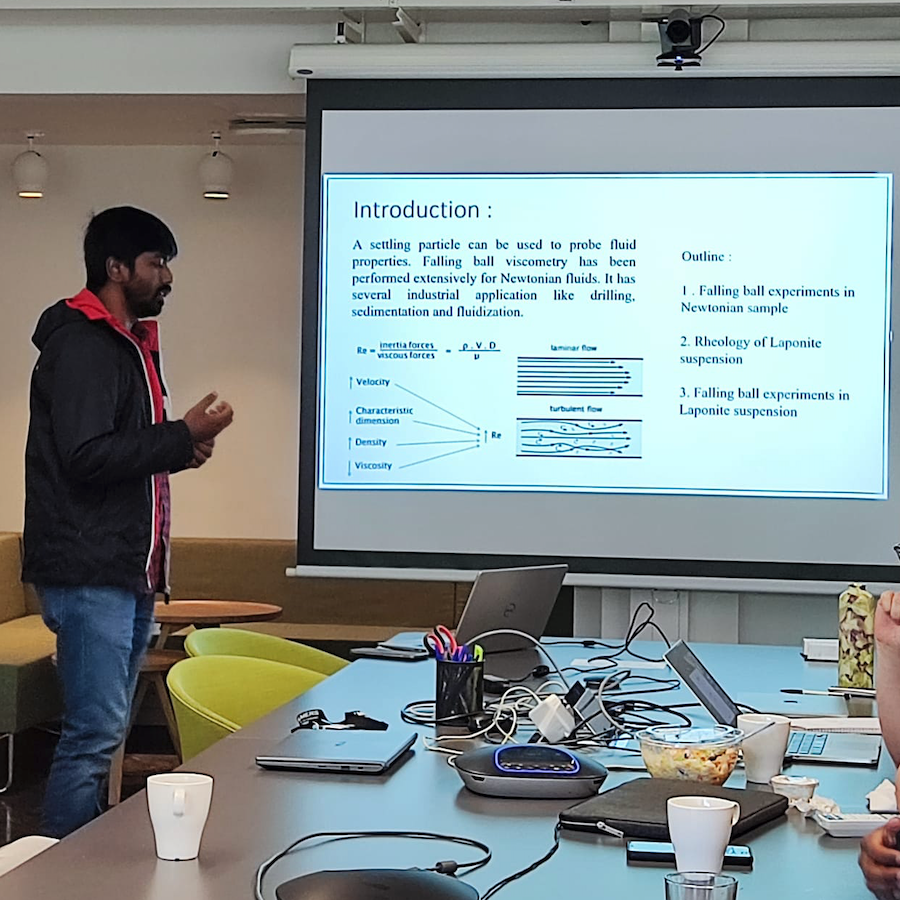
Rajkumar Biswas
Raman Research Institute, Bangalore, India.
1 June 2022, 12:30 CET
Optical tweezers (OT) can be employed to measure pico-Newton forces acting on a colloidal particle trapped in a medium and have been used to successfully probe complex systems having fragile structures. In this work, we use an optical tweezer setup to study aging aqueous suspensions of Laponite clay particles of different concentrations. Laponite particles in aqueous suspension form fragile networks whose rigidities grow with time due to the gradual evolution of inter-particle electrostatic interactions. Using OT, we study the displacements of a trapped micron-sized colloidal bead in a Laponite suspension medium during the evolution of the underlying structures. By analyzing the power spectrum, we demonstrate that the viscosity of the aging Laponite suspension increases with time. Furthermore, we perform active micro-rheology experiments wherein we apply a sinusoidal oscillation to the sample cell while keeping the particle trapped in the Laponite suspension. Simultaneously, the force response of the trapped particle is recorded during the controlled applied oscillation. The phase lag between the applied oscillatory signal and the force experienced by the trapped particle due to the oscillatory deformation is calculated. A range of frequencies is applied to estimate the elastic (G’) and viscous (G”) moduli of the Laponite suspension over a broad range of time scales and at different suspension ages. It is found that G’ is lower than G” at the lower frequencies and eventually crosses G” at a frequency that depends on the Laponite concentration. We change the size of the trapped particle to study how the probe particle size affects the micro-rheological measurements of the viscoelastic gel-like medium. We next investigate the concentration- and aging-dependences of the fragile structures in Laponite suspensions of different concentrations using cryogenic electron microscopy. The average pore areas of these structures are seen to decrease with increasing Laponite concentrations. We show that the crossover frequency of G’ and G”, obtained from micro-rheological measurements, is proportional to the average diameter of the pores in the Laponite gel measured using electron microscopy.
Short Bio
Rajkumar Biswas is currently doing his PhD in Raman Research Institute (RRI), India. Before joining RRI in 2016, he completed his bachelor’s and masters in Physics from St. Xavier’s college, Kolkata and Indian Institute of Technology, Guwahati (IITG) respectively. In RRI he is working in the Soft Condensed Matter group with Prof. Ranjini Bandyopadhyay. His research focuses on rheological and dynamical properties of different soft matter systems. He has worked on various projects which includes rheological studies of Laponite gels using falling ball viscometer and optical tweezer. Along with that, he has been studying the dynamical heterogeneities in colloidal and granular systems.
Seminar by Eric Clément, 31 May 2022
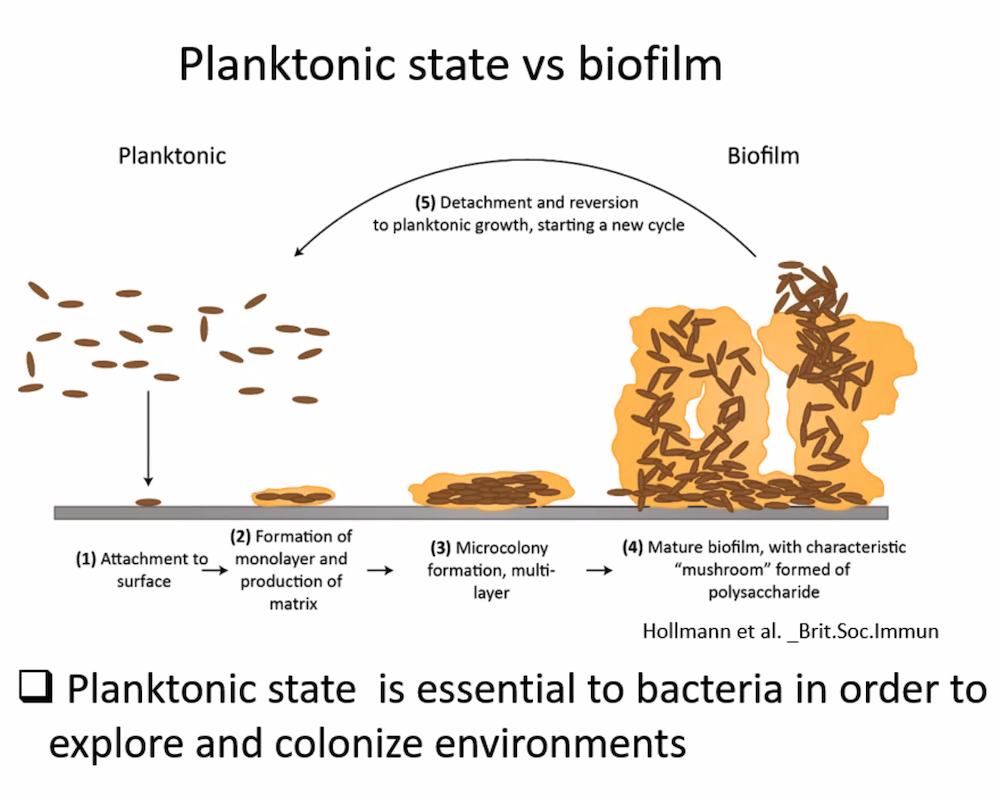
Eric Clément
PMMH-ESPCI-PSL, Sorbonne University, University Paris-Cité
31 May 2022, 11:00 CET
Understanding the way motile micro-organisms such as bacteria explore their environment is central to many ecological, medical and biotechnological questions. Here, I will present recent advances on the actual spatial exploration process undertaken by flagellated bacteria such as E.coli, undergoing sequences of runs and tumbles, leading to a random-walk. The extreme sensitivity of the motor rotation switch (CCW/CW) to the presence of a phosphorylated protein (CheYP) in its vicinity, leads to a behavioral variability of run-times, characterized by a log-normal distribution [1]. This mechanism prevails in most Newtonian fluids and has important consequences on the residence times at surfaces [2] as well as the large scale transport and dispersion in confined environments [3]. However when the surrounding fluid is a yield-stress fluid, the locally high resistance to penetration takes control of the exploration process and the run persistence time distribution is strongly affected by the mechanical bending of the flagella bundle, hence controlling the spatial diffusivity as well as the onset of a motility barrier.
[1] N. Figueroa-Morales et al., 3D spatial exploration by E.coli echoes motor temporal variability, Phys. Rev. X, 10, 021004 (2020).
[2] G. Junot et al., Run-to-tumble variability controls the surface residence times of E. coli bacteria, to appear in Phys. Rev. Lett. (2022).
[3] N. Figueroa-Morales et al., E.coli “super-contaminates” narrow channels fostered by broad motor switching statistics, Science Advances, 6, eaay0155 (2020).
Label-free nanofluidic scattering microscopy of size and mass of single diffusing molecules and nanoparticles published in Nature Methods
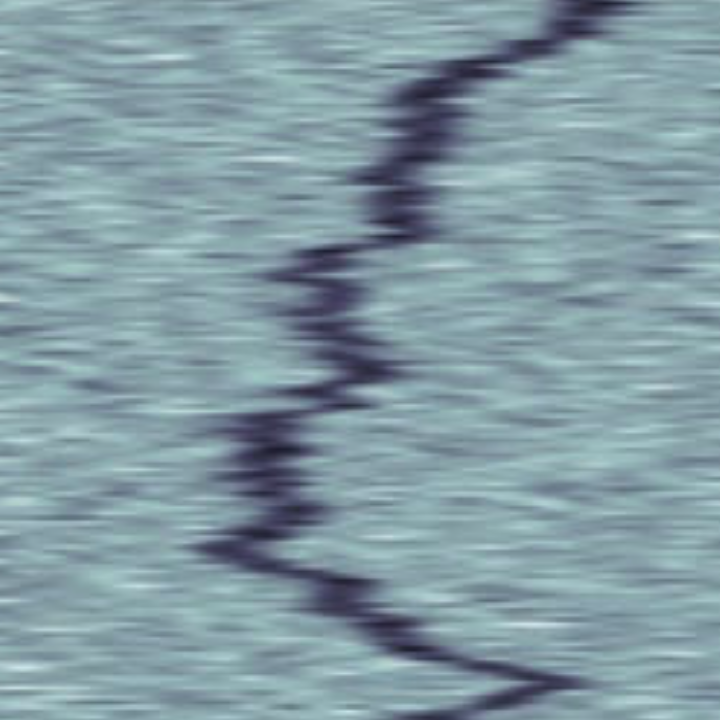
Barbora Špačková, Henrik Klein Moberg, Joachim Fritzsche, Johan Tenghamn, Gustaf Sjösten, Hana Šípová-Jungová, David Albinsson, Quentin Lubart, Daniel van Leeuwen, Fredrik Westerlund, Daniel Midtvedt, Elin K. Esbjörner, Mikael Käll, Giovanni Volpe & Christoph Langhammer
Nature Methods 19, 751–758 (2022)
doi: 10.1038/s41592-022-01491-6
Label-free characterization of single biomolecules aims to complement fluorescence microscopy in situations where labeling compromises data interpretation, is technically challenging or even impossible. However, existing methods require the investigated species to bind to a surface to be visible, thereby leaving a large fraction of analytes undetected. Here, we present nanofluidic scattering microscopy (NSM), which overcomes these limitations by enabling label-free, real-time imaging of single biomolecules diffusing inside a nanofluidic channel. NSM facilitates accurate determination of molecular weight from the measured optical contrast and of the hydrodynamic radius from the measured diffusivity, from which information about the conformational state can be inferred. Furthermore, we demonstrate its applicability to the analysis of a complex biofluid, using conditioned cell culture medium containing extracellular vesicles as an example. We foresee the application of NSM to monitor conformational changes, aggregation and interactions of single biomolecules, and to analyze single-cell secretomes.
August Kälvesten, Richard Blücher, Vilhelm Hedquist, Andreas Bauner, Adam Törnkvist, Eric Dat Le defended their Bachelor Thesis on 25 May 2022. Congrats!
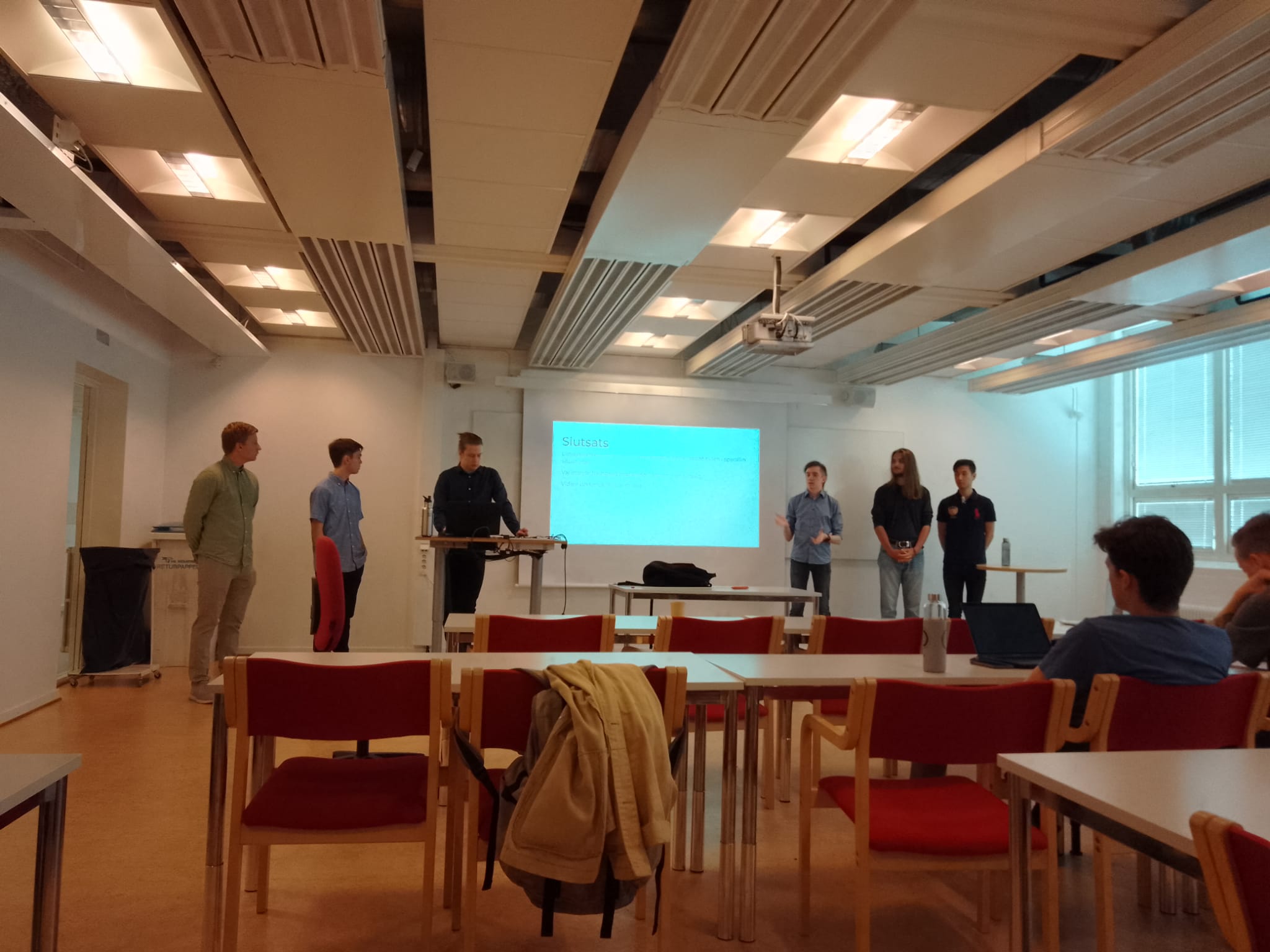
Title: Can slower predators catch faster swarming prey?
A study of systems where faster swarming prey interact with slower predators through simulation
Title: Kan långsammare rovdjur fånga snabbare svärmande byten?
En undersökning av system där snabbare svärmande byten interagerar med långsammare rovdjur genom simulation
Abstract: This project examined how predators can catch prey in a predator-prey system where the predators have a lower speed than their swarming prey. The investigated factors were the varied angular velocity of prey and predator, complex environment, and several cooperating predators. This was done through simulations based on the Vicsek model where a base model was modified for each of the investigated factors. When varied angular velocity was investigated it was found that the angular velo- city of the predator didn’t have a large effect on the numbers of prey captured, but what had an effect was the angular velocity of the prey. That could be explained by the predators traveling towards the prey head-on and the prey not being able to turn away fast enough. For complex environments, it was shown that an increased radius and number of obstacles in the environment led to increased numbers of prey caught. This is contradictory to the phenomenon in nature and could be explained by limitations in the model. Finally, when many cooperating predators were introduced, it was found that groups of three or four predators were required for prey to be caught. When many predators were introduced, more such groups could be created and therefore capture more prey. Although only three uncountable factors that govern predator-prey systems have been investigated, there are some indications that slower predators can catch faster swarming prey.
Sammandrag: I detta projekt undersöktes hur rovdjur kan fånga byten i ett rovdjur-bytessystem där rovdjuren har lägre fart än dess svärmande byten. De faktorer som undersökts är varierande vinkelhastighet hos byten och rovdjur, komplexa miljöer, och flera sam- arbetande rovdjur. Detta gjordes genom simuleringar baserat på Vicsek-modellen där en basmodell modifierades för varje faktor som undersöktes. Då varierande vin- kelhastighet undersöktes noterades det att rovdjurets vinkelhastighet inte har någon större inverkan på antalet fångade byten, utan det var snarare bytesdjurens vinkel- hastighet som hade störst inverkan. Det kunde förklaras av att rovdjuren lyckades fånga byten då de färdades rakt mot varandra och bytesdjuret inte kunde svänga av tillräckligt snabbt. För komplexa miljöer visades att en ökad radie och antal hinder i miljön ökade antalet fångade byten. Detta var motsägande observerade fenomen i naturen och kunde förklaras av begränsningar i modellen. Slutligen observerades, när flera samarbetande rovdjur undersöktes, att det krävdes grupper av tre eller fyra rovdjur för att byten skall fångas. Då många rovdjur introducerades kunde flera sådana grupper skapas och därför fånga fler byten. Trots att endast tre av de oräkneliga faktorer som styr rovdjur-bytessystem i verkligheten har undersökts kan vissa indikationer finnas på att långsammare rovdjur kan fånga snabbare svärmande byten.
Nyckelord: Vicsek-modellen, rovdjur-bytessystem, simulering, långsamma rovdjur, svärmande byten
Supervisors: Agnese Callegari and Giovanni Volpe, Department of Physics, University of Gothenburg
Examiner: Lena Falk, Department of Physics, Chalmers University of Technology
Place: FL41
Date: 25 May, 2022
Time: 9:00
Invited Talk by G. Volpe at the 27th Annual IASBS Meeting on Condensed Matter Physics, Online, 18 May 2022
The AnDi Challenge: Objective comparison of methods to decode anomalous diffusion
Giovanni Volpe
18 May 2022, 9:00 (CEST)
Online for: 27th Annual IASBS Meeting on Condensed Matter Physics
IASBS, Zanjan, Iran
18-19 May 2022
Deviations from Brownian motion leading to anomalous diffusion are found in transport dynamics from quantum physics to life sciences. The characterization of anomalous diffusion from the measurement of an individual trajectory is a challenging task, which traditionally relies on calculating the trajectory mean squared displacement. However, this approach breaks down for cases of practical interest, e.g., short or noisy trajectories, heterogeneous behaviour, or non-ergodic processes. Recently, several new approaches have been proposed, mostly building on the ongoing machine-learning revolution. To perform an objective comparison of methods, we gathered the community and organized an open competition, the Anomalous Diffusion challenge (AnDi). Participating teams applied their algorithms to a commonly-defined dataset including diverse conditions. Although no single method performed best across all scenarios, machine learning-based approaches achieved superior performance for all tasks. The discussion of the challenge results provides practical advice for users and a benchmark for developers.
